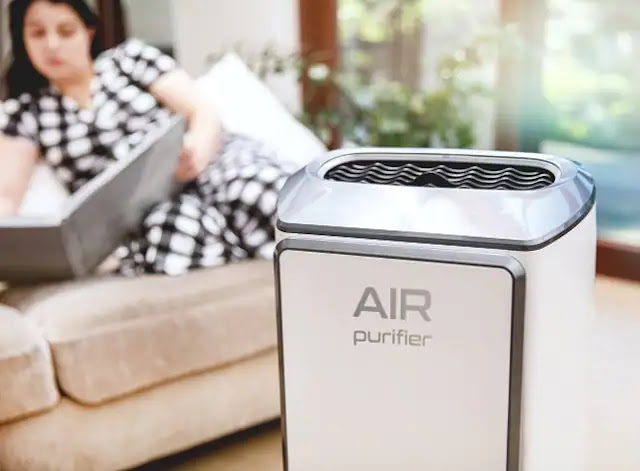The device must clean up particulate matter, allergens and ultra-fine dust particles
As winter sets in, a clutch of cities in north India tops the list of the world’s most polluted places. For millions of residents of these cities, it is the time when the air quality index (AQI) turns “severe” or “hazardous” even. It’s also the time when people start buying air purifiers.
Some popular air purifier brands in India include Dyson, Samsung, Philips, Honeywell, Coway, Sharp, Mi, Kent, Voltas, Carrier, Bluestar, and Havells. Most devices use either charcoal absorbents or mechanical filters. Other techniques include electrostatic, ionizers, ozone, or ultraviolet air filters.
“Air pollution today is not just a health hazard outside homes but is a concern even within our homes. Indoor air pollution is just as deadly as outdoor air pollution. While pollen and dust may trigger allergic reactions and induce symptoms such as sneezing, dizziness, coughing and fever, inhaling VOCs [volatile organic compounds] can result in more serious health ramifications,” said Anil Rai Gupta, chairman and managing director of Havells India.
Selecting a purifier
Measure the size of the room where you want to use an air purifier. If your room measures 150 sq. ft., get a purifier that indicates a rating that is at or just above this number. A 200 or 250 sq. ft. rating would be just as efficient as one that measures 150 sq. ft. Getting the size is important because it ensures that the purifier will work effectively.
The second step is to go through the purifier’s specification for active cover. Check the CADR and ACH: the first term means how long it will take the device to filter air and the second how many times it can do so in one hour. CADR, or clean air delivery rate, is calculated cube per minute and anything between 350 and 450 is a good rating.
ACH, or air changes per hour, shows how much volumetric air a purifier can take in one hour, or how many times it can purify the air in a room. A device marked ACH of three means it will purify air in a room thrice in one hour.
A filtration system is at the heart of a purifier. Entry-level air purifiers have a three-layer system: pre-filter, Hepa and a carbon which together work to remove pollutants, dust particles and odour. Some purifiers combine the three into one filtering unit, as others offer three separate filters that can be replaced individually.
Entry-level air purifiers have a basic LED indicator and better models use digital display to show the actual air quality level in a room. A digital display tells when you need to run a purifier at the highest level and when you can turn it down.
An air purifier takes between 35 minutes to up to 3 hours to do its work depending on room size and factors like ACH, filters, and fan settings.
Air purifiers remove poisonous PM2.5 particulate matter, which is small enough to travel deep into the lungs, enter the bloodstream and can cause severe respiratory diseases. Some air purifiers can remove particles as small as 0.03 microns present in tobacco smoke.
Filter your budget
Air purifiers sell for Rs 5,000, Rs 50,000 and more depending upon technology used, area covered, and features.
Some recent launches include the Samsung AX46 that has a CADR of 467 cubic meters per hour. It has a multi-layered 3D purification system, monitoring, and a coverage area of up to 645 square feet. It works for large spaces and has laser PM 1.0 sensor (for detecting particulate matter) and a washable pre-filter to check larger dust particles.
Another model called Samsung AX32 has a CADR of 320 cubic meters per hour and a coverage area of 356 square feet. Its display monitors real time indoor air quality and shows air purity with its 4-colour level indicator and the particulate matter (PM) 10 dust and gas sensors. “Consumers have grown more aware and health conscious. When it comes to breathing clean air, they are making more informed decisions and looking for air purifiers that offer wider purification coverage area and clean room air in minimum time. Our latest range of air purifiers is designed to remove even the most ultrafine dust particles effectively allowing consumers to breathe pure air,” said Mohandeep Singh, senior vice president, Consumer Electronics Business, at Samsung India.
Dyson has recently launched two new purifiers: One called H PO7 costs Rs 66,900 and covers an area of 600 sq ft and the other, T PO7, is for Rs 56,900.
Beyond purifiers
The air in our cities is nowadays ‘unhealthy’, ‘very unhealthy’ or even ‘hazardou’. Avoid going outdoors in the mornings when pollutants are at a lower level. When the temperature rises and the sun is out, the pollutants will go higher up in the air. Dr Prashant Chhajed, director-pulmonology and sleep centre, Fortis Hiranandani Hospital in Mumbai, recommended using N95 or N99 masks. People who have respiratory conditions or allergies should wear a N95 mask when they step out.
He said people with a respiratory condition that requires regular therapy must not miss their medication, as pollutants act as an irritant and can cause exacerbation of an underlying condition such as Asthma or COPD (Chronic Obstructive Pulmonary Disease).
Chhajed recommended air purifiers at places with high pollution, suggesting the ones with HEPA filter. Filters must be cleaned regularly, or replaced as per the recommendations of the manufacturer.
Major air purifier brands and their price
| Brands | Features | Price on Amazon India (Rs) |
| Coway Professional Air Purifier | HEPA filter 1 kg of weight Carbon filter air purifier 5 x 24.5 x 52.5 cm dimensions Low noise and power consumption |
14,400 |
| Dyson Pure Air Purifier | 20 x 18.5 x 102.2 cm dimensions Corded electric power source with 110 volts voltage Ideal for large roomsTouch screen display for easy use Wi-Fi-enabled air purifier HEPA filter | 27,900.00 |
| MI Air Purifier | 8 kg weight Corded electric power source HEPA filter reduces 99 % toxic particles and germs Traps harmful allergens and reduces bad odors | 9,998.00 |
| Philips Air Purifier | 5 x 54.1 x 21.1 cm dimensions Corded electric power source HEPA filter type Carbon filter | 8,799.00 |
| Sharp Air Purifier | HEPA pre-filter filter type Up to 200 sq. feet working efficiency Dust and odor sensor 2 x 50.2 x 35.8 kg dimensions | 18,490 |
| American Micronic Air Purifier | HEPA 3-stage pre-filter type 99% filtered air Cleans at speed of 5 times per hou 22 watts wattage 5 x 20.4 x 34.6 cm dimensions | 4,486 |
Source: Market Research




